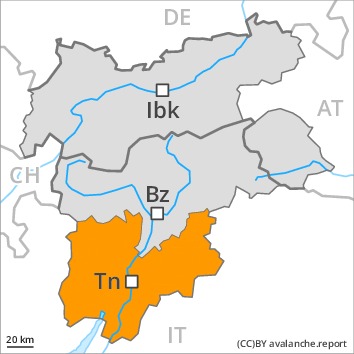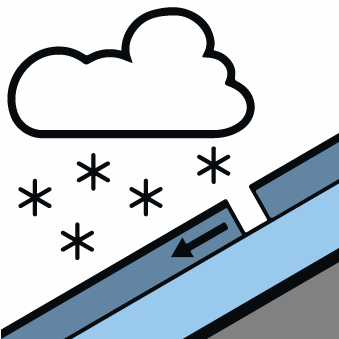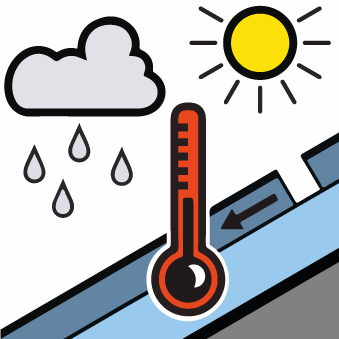
Danger level
Avalanche Problem
 | | New snow |
|  | |  |
 | | Wet snow |
|  | |  |
 | | Wind-drifted snow |
|  | |  |

As a consequence of new snow and wind a considerable avalanche danger will persist. They can in some places be released by people.
20 to 40 cm of snow fell on Sunday above approximately 1800 m. In some localities 5 to 10 cm of snow, and even more in some localities, will fall above approximately 1200 m. The new snow and wind slabs of the last few days remain for the foreseeable future prone to triggering in all aspects in all altitude zones, especially on very steep slopes, as well as at transitions from a shallow to a deep snowpack. Dry and wet avalanches can be released, even by small loads in isolated cases. As the day progresses individual medium-sized natural avalanches are possible. They can also penetrate deep layers and reach quite a large size. Areas with glide cracks are to be avoided as far as possible.
Snowpack
dp.6: cold, loose snow and wind
dp.3: rain
As a consequence of new snow and a strong southwesterly wind, wind slabs formed, in particular adjacent to ridgelines and in gullies and bowls above the tree line. Over a wide area new snow and wind slabs are lying on the smooth surface of an old snowpack, especially above approximately 1900 m. The old snowpack is moist, in particular at low and intermediate altitudes, as well as in the south also at elevated altitudes. Faceted weak layers exist in the centre of the snowpack.
Tendency
Slight decrease in avalanche danger as the temperature drops.











